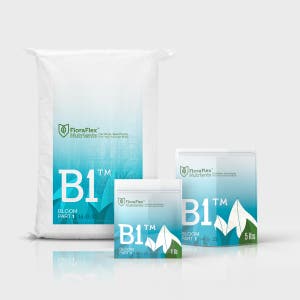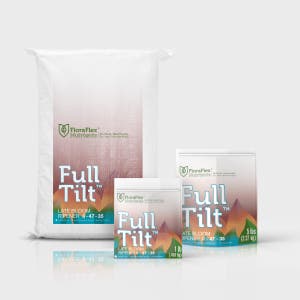Reservoir management is the secret weapon of successful growers. Yet, for many, it remains a complex and often misunderstood aspect of hydroponic and soilless cultivation. A stable reservoir isn't just about water and nutrients—it's about creating the perfect environment to nourish your plants, reduce stress, and boost yields. Using FloraFlex nutrients, mastering the proper mixing order, maintaining pH balance, and stabilizing your reservoir can transform your grow.
This guide dives into the strategies and techniques to help you manage your reservoir like a pro, avoid common mistakes, and unlock your plants’ full potential.
Why Proper Reservoir Management Is the Key to Success
Your reservoir is the lifeblood of your grow. Without proper care, it can become a source of instability, leading to nutrient lockout, pH imbalances, and stunted plant growth. When managed correctly, however, it ensures:
- Optimal nutrient availability: Prevents chemical reactions and lockout.
- Consistent pH levels: Reduces fluctuations for stress-free feeding.
- Improved root health: Supports nutrient absorption and plant development.
- Higher yields: Allows your plants to reach their full genetic potential.
"Ever wonder why your reservoir pH fluctuates? It’s time to stop the chaos—learn the fix."
The Step-by-Step Guide to Mixing FloraFlex Nutrients
The order in which you mix nutrients is critical. FloraFlex products are designed to deliver stability and efficiency, but only when combined in the correct sequence. Follow this step-by-step process to ensure the best results.
1. Add Wet Si (Silica) First – When Applicable
Silica strengthens cell walls, improves stress tolerance, and boosts overall plant health. It should always be the first nutrient added to your reservoir, as it can cause precipitation or clumping when mixed with other elements out of order.
- Pro Tip: Allow Wet Si to circulate for 2-3 minutes to ensure it dissolves completely.
- Why It Matters: Silica bonds with other nutrients if added later, reducing its effectiveness.
2. Add Wet CalMag – When Applicable
Calcium and magnesium are vital secondary nutrients that support structural integrity and chlorophyll production. After silica, CalMag stabilizes your solution and ensures a balanced nutrient profile.
- Quick Tip: Circulate the reservoir for another 2-3 minutes before proceeding.
- Common Mistake: Adding CalMag too late can lead to calcium precipitation, rendering it unusable by plants.
3. Add Base Nutrients (V1/B1 and V2/B2)
FloraFlex base nutrients are designed to deliver the essential macronutrients your plants need. Divide them into two parts for maximum solubility and compatibility.
- Part 1 (V1 or B1): Contains nitrogen and other critical macronutrients.
- Part 2 (V2 or B2): Supplies phosphorus and potassium for balance.
Pro Tips:
- Always dissolve Part 1 fully before introducing Part 2 to avoid nutrient lockout.
- Let the solution mix for 3-5 minutes between steps.
4. Introduce Bloom Boosters (When Applicable)
In the flowering stage, bloom boosters like Bulky B and Full Tilt provide additional phosphorus and potassium to encourage dense, high-quality flowers.
- Bulky B: Use during early flowering for enhanced bud formation.
- Full Tilt: Ideal for the final stages of flowering to maximize density and terpene production.
5. Add Root or Irrigation Cleansers
Clean irrigation lines are essential for nutrient uptake and plant health. Products like Root Drip prevent salt buildup, support root development, and extend the life of your irrigation system.
- Timing Tip: Always add cleansers last to avoid interference with nutrient uptake.
6. Adjust pH Levels
FloraFlex nutrients are designed to stabilize pH levels between 5.8-6.2, the ideal range for nutrient absorption. After all components are mixed:
- Test the pH using a reliable meter.
- Add pH adjusters slowly to avoid overshooting the target range.
- Allow the solution to circulate for 5-10 minutes before rechecking.
"The right mixing order isn’t optional—it’s the secret to unlocking your plants’ full potential."
Circulation Pumps vs. Air Stones: The Better Choice
Many growers rely on air stones to mix their reservoirs, believing they provide aeration and even distribution. However, air stones can cause more harm than good, including pH fluctuations, nutrient precipitation, and algae growth.
Why Circulation Pumps Are Superior:
- Even Nutrient Distribution: Circulation pumps create consistent flow, ensuring all nutrients remain evenly mixed.
- Reduced pH Fluctuations: By minimizing aeration, circulation pumps help maintain stable pH levels.
- Algae Prevention: Air stones introduce oxygen that can encourage algae growth, while circulation pumps avoid over-aeration.
- Pro Tip: Position your pump strategically to ensure full circulation without over-agitating the solution.
Maintaining a Stable Reservoir
FloraFlex nutrients are specially formulated to maintain stability, even over extended periods. With proper mixing and maintenance, your reservoir will remain within ±0.01 EC stability over 7 days, saving time and reducing the need for constant adjustments.
Best Practices for Reservoir Maintenance:
- Start Clean: Always rinse your reservoir and equipment before use.
- Monitor Daily: Check pH and EC levels to catch issues early.
- Temperature Control: Keep your reservoir between 65-70°F to prevent microbial growth.
- Replace Regularly: Change the solution every 7-10 days or sooner if you notice significant changes in clarity or smell.
Customer Testimonials: Real Success Stories
- "Game-Changer for My Grow!"
"Following the FloraFlex mixing guide completely eliminated my pH swings. My plants have never been healthier!" – Alex T., Commercial Grower - "Circulation Pumps are a Must!"
"I ditched air stones after reading this guide, and the difference in my reservoir stability is night and day." – Sarah P., Greenhouse Grower - "More Yields, Less Hassle!"
"Sticking to the proper mixing order saved my plants from nutrient lockout. I’ve never seen such dense flowers before!" – Jamie L., Hobbyist Grower






















